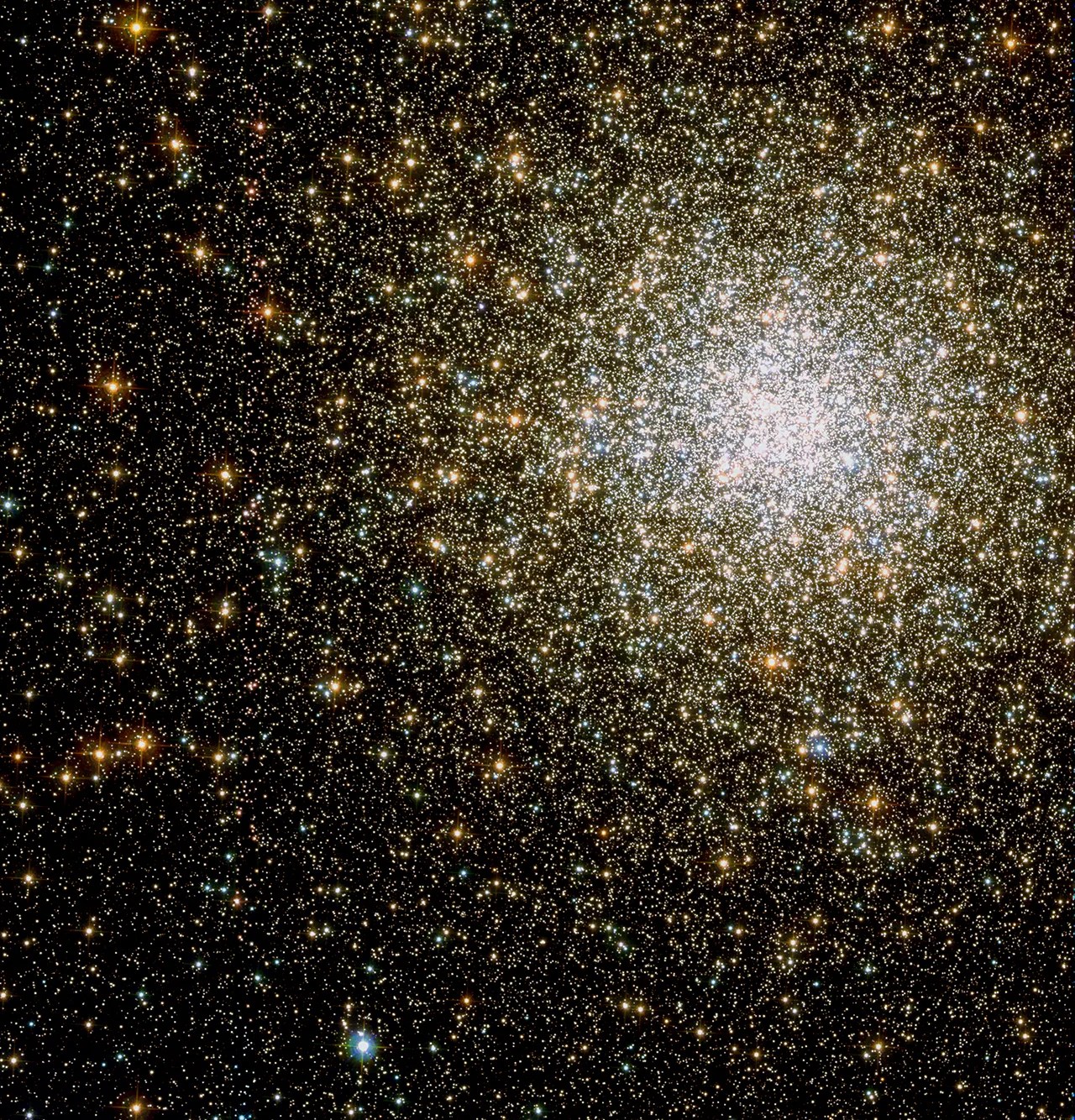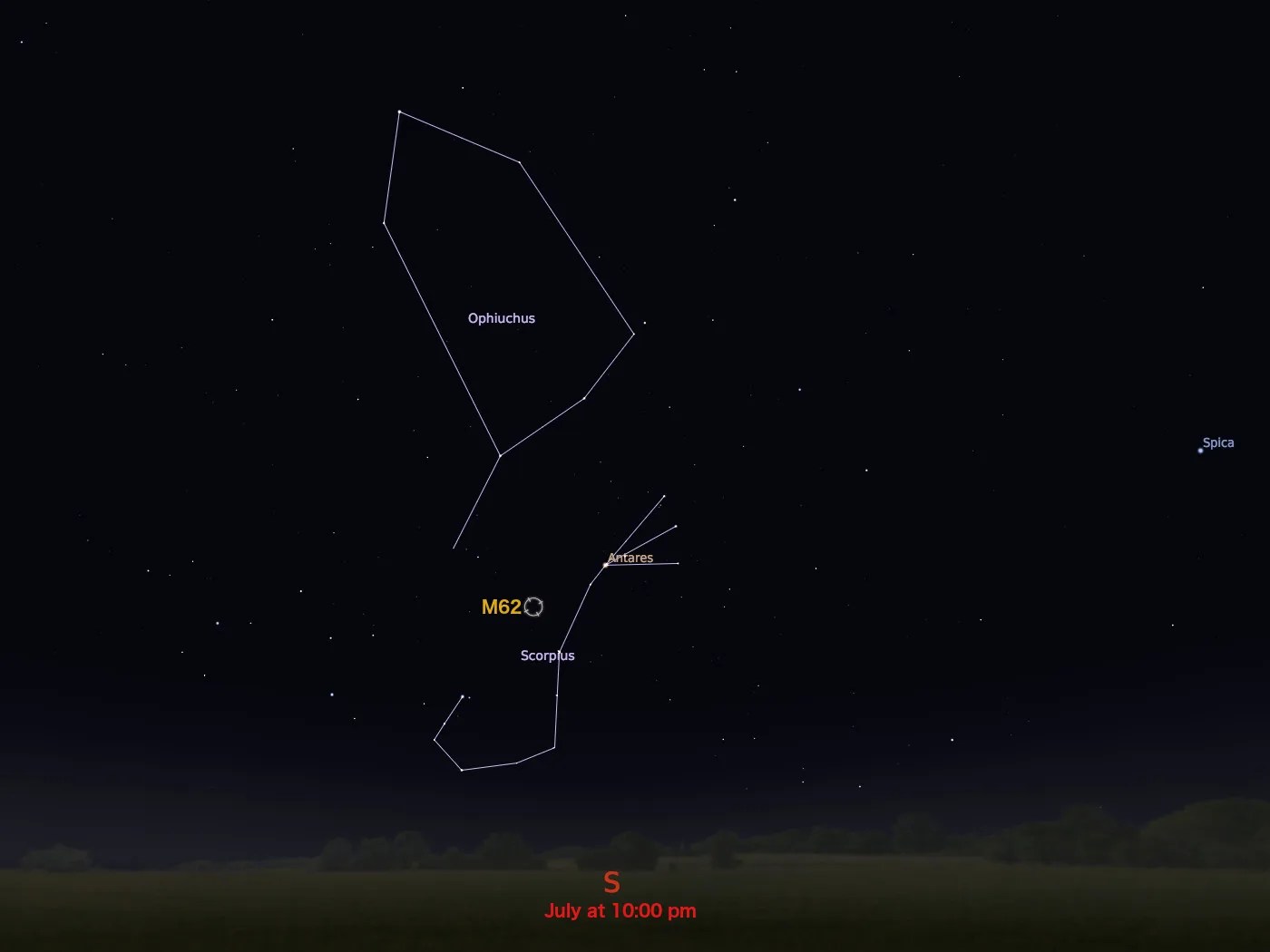Messier 62
This globular cluster has an extremely dense core of 150,000 stars.
Distance
22,200 light-years
Apparent Magnitude
6.6
constellation
Ophiuchus
object type
Globular Cluster

M62 is known for being one of the most irregularly shaped globular clusters in our galaxy. This might be because it is one of the closest globular clusters to the center of our galaxy and is affected by galactic tidal forces, displacing many of the cluster’s stars toward the southeast.
M62 has an extremely dense core of 150,000 stars. In 2013, astronomers discovered a stellar-mass black hole in M62, one of the first to ever be found in a globular cluster. According to observations from NASA’s Chandra X-ray Observatory, M62 also contains a large number of X-ray binaries, which formed in close encounters between stars in the cluster.
This Hubble observation was taken in ultraviolet and visible light using the Advanced Camera for Surveys and Wide Field Camera 3. Most of the globular cluster is featured in this observation, with the core focused toward the top right. Hubble made these observations to help astronomers study the characteristics of globular clusters, measure the mass of M62’s black hole, and help determine the formation and evolution of cluster binaries.
Charles Messier discovered M62 in 1771. The globular cluster is almost 12 billion years old. M62 has a magnitude of 6.6 and is located in the constellation Ophiuchus, approximately 22,200 light-years away from Earth. Best observed in July, the cluster is easily found southeast of the bright star Antares and can be seen as a hazy patch with binoculars. Small telescopes reveal a comet-like shape, while telescopes 8 inches or larger will resolve more stars.
For more information about Hubble's observations of M62, see:

Explore Hubble's Messier Catalog
The following pages contain some of Hubble’s best images of Messier objects.

Messier 1 (The Crab Nebula)
Better known as the Crab Nebula, Charles Messier originally mistook Messier 1 for Halley’s Comet, which inspired him to create…

Messier 2
Hubble's image of Messier 2 is comprised of visible and infrared wavelengths of light.

Messier 3
Messier 3 holds more than 500,000 stars.




